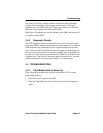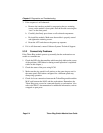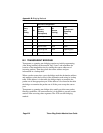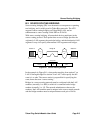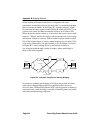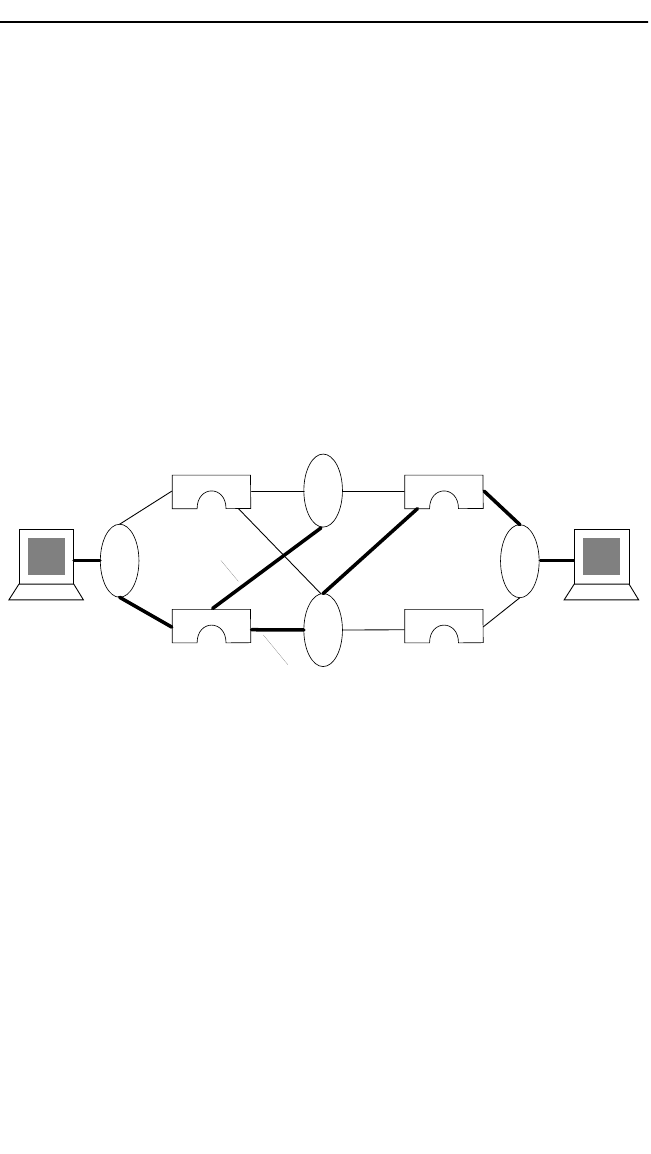
Appendix B: Bridging Methods
Page B-4 Token Ring Switch Module User Guide
Source routing workstations need not be configured with route
information; instead they discover the best route to a destination through
the use of explorer frames. In the Figure B-1 example, station C might
first transmit an empty explorer frame. Bridge B would add 43-B-7 as its
portion of the route, and then transmit the explorer on all other LANs.
When the packet reaches station A, it can reverse the route to send a reply
back to C. When C receives the reply, both stations have all of the routing
information needed to converse, with no further explorer frames needed.
Part of the original intent of source routing bridging was to enable LANs
to be richly connected by low-performance, low-cost bridges. As shown
in Figure B-2, source routing allows an end station to choose a
less-congested path through a chain of bridges, where each bridge is
likely to become congested.
Figure B-2 Data Path Using Source Routing Bridging
In contrast to spanning tree bridging, all bridges and all links are active
with source routing bridging; the least-congested path is chosen at
discovery time. With products like the ATX, such congestion avoidance is
rarely necessary, since the bridge is capable of handling nearly any traffic
load without experiencing congestion.
Congested
Alternative Route
Station A
Station C



